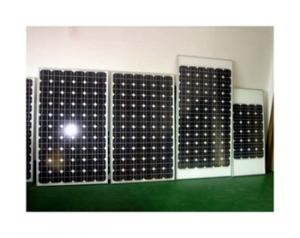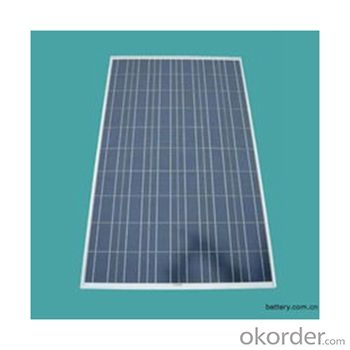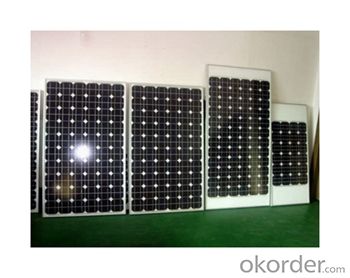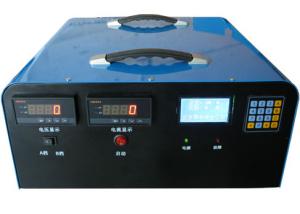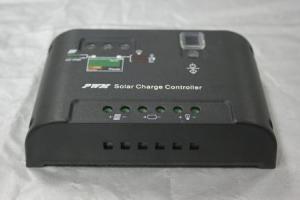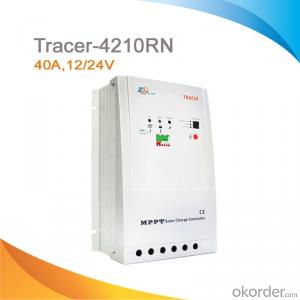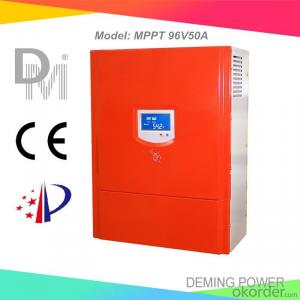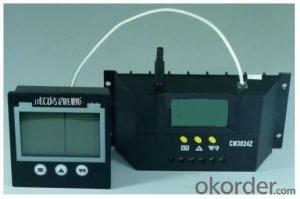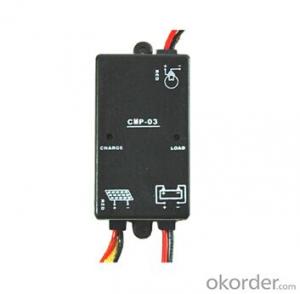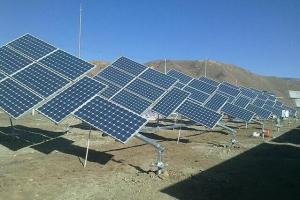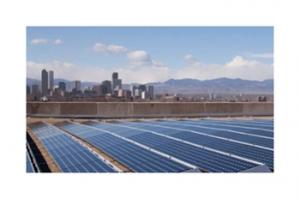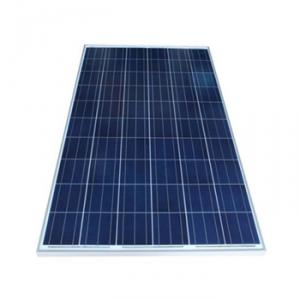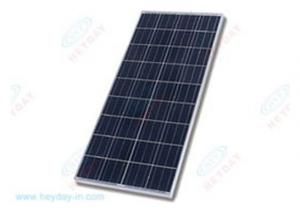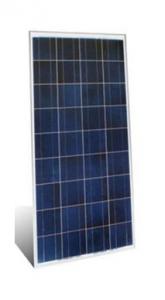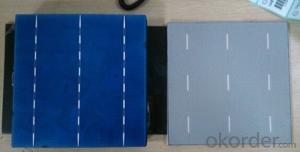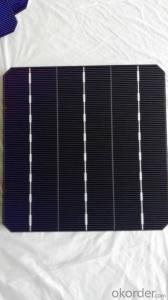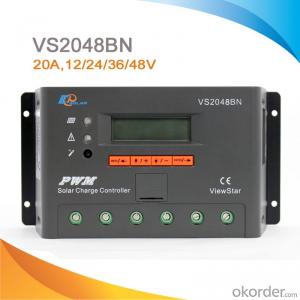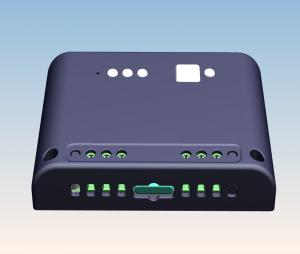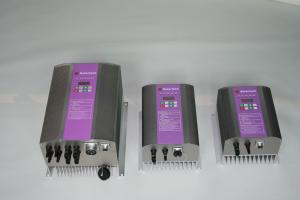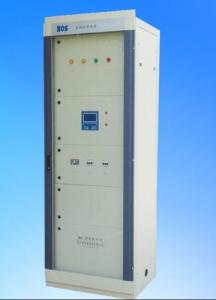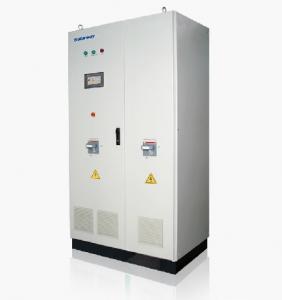Best Solar Controllers for Poly-Crystalline 215W 156*156 Solar Modules
OKorder Service Pledge
OKorder Financial Service
You Might Also Like
Solar Module Descriptions:
Solar Power Modules (known as Photovoltaics - PV) can generate electricity for your home or business, either as part of a stand-alone solar power system, or for buildings already connected to the local electricity network.
PV systems use the most abundant energy source on the planet, solar radiation, to generate electricity. They are silent, consume no fuel and generate no pollution. They also contribute to the reduction of greenhouse gas emissions; a 2kW PV system on a house will prevent the emission of about 40 tonnes of CO2 during its projected 30 year lifetime. Furthermore, the use of PV will reduce your electricity bills and exposure to fluctuating and steadily rising electricity prices.
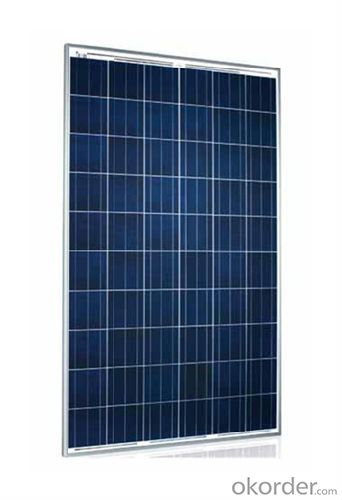
Electrical Characteristics
Max-power (W) | 215 |
Max-Power Voltage (V) | 29 |
Max-Power Current (A) | 7.41 |
Open-Circuit Voltage (V) | 35.90 |
Short-Circuit Current (A) | 7.85 |
Mechanical Characteristics
Cable type, Diameter and Length | 4mm2, TUV certified, 1000mm |
Type of Connector | Compatible with MC4 plug |
Arrangement of cells | 6*10 |
Cell Size | 156*156 |
Dimension | 1580*1069*45 |
Weight | 19.5Kg |
Glass, Type and Thickness | High Transmission, Low Iron, Tempered Glass 3.2mm |
Features
Guaranteed positive tolerance 0/+5w ensures power output reliability
Strong aluminum frames module can bear snow loads up to 5400Pa and wind loads up to 2400Pa.
Excellent performance under low light environments (mornings evenings and cloudy days)
12 years for product defects in materials and workmanship and 25 years for 80% of warranted minimum power.
Certifications and standards: IEC 61215.
Manufactured according to International Quality and Environment Management System (ISO9001, ISO14100).
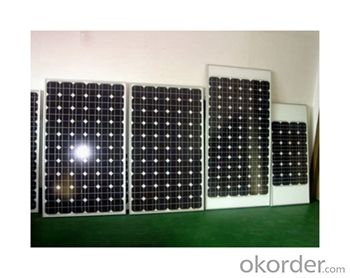
FAQ
Q: Do you have any MOQ limit?
Our MOQ is 200 pieces.
Q: How long is the warranty period for the solar modules?
15 years 90% of its nominal power rating.
25 years 80% of its nominal power rating
- Q: Can a solar controller be used with solar panels that are connected to a solar ventilation system?
- Yes, a solar controller can be used with solar panels that are connected to a solar ventilation system. The solar controller helps regulate the power output from the solar panels and ensures efficient charging of the ventilation system's batteries. It also protects the batteries from overcharging and optimizes the overall performance of the system.
- Q: What is the maximum discharge current that a solar controller can provide?
- The maximum discharge current that a solar controller can provide depends on the specific model and capacity of the controller. Solar controllers are designed to regulate the flow of electrical current between the solar panel and the battery or load. They typically have a maximum discharge current rating that determines the maximum amount of current that can be drawn from the battery or load at any given time. This maximum discharge current rating is usually specified by the manufacturer and can vary widely depending on the size and capabilities of the solar controller. It is important to carefully select a solar controller that is compatible with the anticipated load or battery discharge requirements. Some smaller solar controllers may have a maximum discharge current rating of around 10-20 amps, while larger, high-capacity controllers can support discharge currents of 100 amps or more. It is essential to consult the product specifications or datasheet of the specific solar controller to determine its maximum discharge current capacity. Exceeding the maximum discharge current rating of a solar controller can lead to overheating, reduced efficiency, and potential damage to the controller or connected components. Therefore, it is crucial to ensure that the maximum discharge current requirements of the system are within the capabilities of the chosen solar controller.
- Q: Can a solar controller be used with solar panels of different efficiencies?
- Solar panels with different efficiency levels can still be used with a solar controller. The primary function of a solar controller is to regulate the flow of electricity from the panels to the batteries or grid. It is designed to handle varying input voltages and currents from the panels. The efficiency of a solar panel refers to its ability to convert sunlight into electricity. Higher efficiency panels generate more power for a given amount of sunlight. However, the panel's efficiency does not impact its compatibility with a solar controller. As long as the voltage and current of the panels fall within the supported range of the solar controller, they can be used together regardless of their individual efficiencies. The solar controller will manage the charging process and ensure that the batteries or grid receive the optimal amount of power from the panels, regardless of their efficiency.
- Q: What is the role of a solar controller in preventing overcurrent in the solar panel system?
- Maintaining the safety and optimal functioning of a solar panel system heavily relies on the crucial role of a solar controller in preventing overcurrent. Also referred to as a charge controller, this device effectively regulates the flow of current from the solar panels to the battery bank or electrical load. A significant function of the solar controller is to prevent the batteries from overcharging. As solar panels generate electricity from sunlight, it is possible for them to produce more current than the battery bank can handle if not properly regulated. This surplus of current can result in overcharging, which has the potential to damage the batteries and reduce their lifespan. To prevent the occurrence of overcurrent, the solar controller actively monitors the voltage of the battery bank and makes necessary adjustments to the charging current. When the batteries reach their maximum voltage level, the solar controller either reduces the charging current or completely disconnects the solar panels from the battery bank to halt any further flow of current. This measure ensures that a safe and optimal charging level is maintained for the batteries, ultimately guaranteeing their longevity and performance. Furthermore, the solar controller also plays a vital role in safeguarding the solar panels themselves from overcurrent. In cases where partial shading occurs, a phenomenon known as "hot spots" can emerge, wherein certain sections of the solar panels receive less sunlight compared to others. This imbalance in the current flow can lead to overcurrent in those specific areas, potentially causing damage to the solar panels. To mitigate these issues, solar controllers are equipped with various protective features, including overcurrent protection, short-circuit protection, and reverse polarity protection. By constantly monitoring the current flow from the panels, the solar controller promptly disconnects them if any abnormalities are detected, effectively preventing any potential damage. In summary, the primary function of a solar controller in a solar panel system is to regulate the charging current to the battery bank, thus preventing overcharging and damage to the batteries. Additionally, it serves to protect the solar panels from overcurrent and potential damage caused by shading or other irregularities. This ensures the system's longevity, safety, and optimal performance.
- Q: Can a solar controller handle high wind conditions?
- Yes, a solar controller can handle high wind conditions. Solar controllers are typically designed to withstand various environmental factors, including high wind speeds. They are made to be durable and able to withstand harsh conditions, ensuring the safe and efficient operation of solar power systems even in windy conditions.
- Q: What is the power of the solar controller?
- The solar controller is represented by the maximum available current
- Q: How does a solar controller prevent overvoltage in the battery?
- A solar controller prevents overvoltage in the battery by constantly monitoring the voltage level of the battery. When the voltage exceeds a certain threshold, the controller regulates the charging current from the solar panels to prevent the battery from being overcharged, thus avoiding overvoltage.
- Q: Can a solar controller be used with a solar pool heater?
- Yes, a solar controller can be used with a solar pool heater. A solar controller helps to regulate and optimize the operation of solar panels, ensuring that they are functioning at their maximum efficiency. This can be beneficial for a solar pool heater, as it allows for better control and management of the heating process, resulting in more efficient and effective heating of the pool water.
- Q: Does a solar controller have surge protection?
- Yes, a solar controller typically includes surge protection. Surge protection is a crucial feature in solar controllers as it safeguards the solar panels and other components of the solar system from voltage spikes and power surges. These spikes can occur due to lightning strikes, grid fluctuations, or other electrical disturbances, and can potentially damage or destroy the solar controller and other connected devices. Surge protection in a solar controller helps to absorb and redirect these voltage spikes, ensuring the smooth and safe operation of the solar system.
- Q: Does a solar controller have a built-in timer function?
- Yes, a solar controller typically has a built-in timer function. This feature allows users to set specific times for the solar panel system to operate and provides control over when the system should generate and distribute power.
Send your message to us
Best Solar Controllers for Poly-Crystalline 215W 156*156 Solar Modules
OKorder Service Pledge
OKorder Financial Service
Similar products
Hot products
Hot Searches
Related keywords

